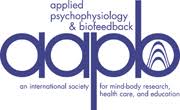Heart Rate Variability Biofeedback for Major Depression
Categories
Keywords
Categories
Keywords
- Show all
- ADHD
- Anxiety/Panic
- Burnout
- Cancer
- Cardiovascular disease
- Chronic pain
- Cognitive function
- Cortisol/DHEA
- Costs
- Dementia
- Depressie
- Diabetes
- Global Coherence
- Hypertension
- Intuition & Consiousness
- Kids/Youth
- Leadership
- Meditation/Mindfulness
- Metabolic Syndrome
- Obesity/Eating disorder
- Pregnancy
- PTSD
- Resilience
- Schizophrenia
- Science HRV & Coherence
- Sleep quality & fatigue
- Social Coherence
- Stress
Heart Rate Variability Biofeedback for Major Depression

Heart rate variability for the treatment of major depression is a novel, alternative approach that can offer symptom reduction with minimal-to-no noxious side effects. The following material will illustrate some of the work being conducted at our laboratory to demonstrate the efficacy of heart rate variability. Namely, results will be presented regarding our published work on an initial open-label study and subsequent results of a small, unfinished randomized controlled trial. Autonomic nervous system (ANS) dysfunction is thought to play a significant role in depression. Prior research indicates that individuals suffering from depression often show decreased vagal tone, increased heart rate, fatigue, sleep disturbance, and sympathetic arousal. Heart rate variability (HRV) biofeedback involves training subjects to adjust their breathing rate to a resonant frequency (RF), a breathing rate (usually slower than normal breathing) at which respiratory sinus arrhythmia (RSA) is maximized. Why HRV biofeedback for depression? Colleagues from our laboratory already have demonstrated that in healthy individuals, HRV biofeedback produces a significant increase in baroreflex gain (change in heart rate for each mm Hg change in blood pressure), presumably leading to improved homeostatic control over blood pressure and other processes associated with it (Lehrer et al., 2003; Vaschillo, Lehrer, Rishe, & Konstantinov, 2002). It also appears to produce an increase in vagus nerve activity. Indirectly, through anatomical projections from the baroreceptors to the hypothalamus and limbic system and increased parasympathetic activity, this method also would be expected to increase modulation of emotionally and autonomically mediated reflexes throughout the body, resulting in reduction of depressive symptoms.
Download the complete article, click here